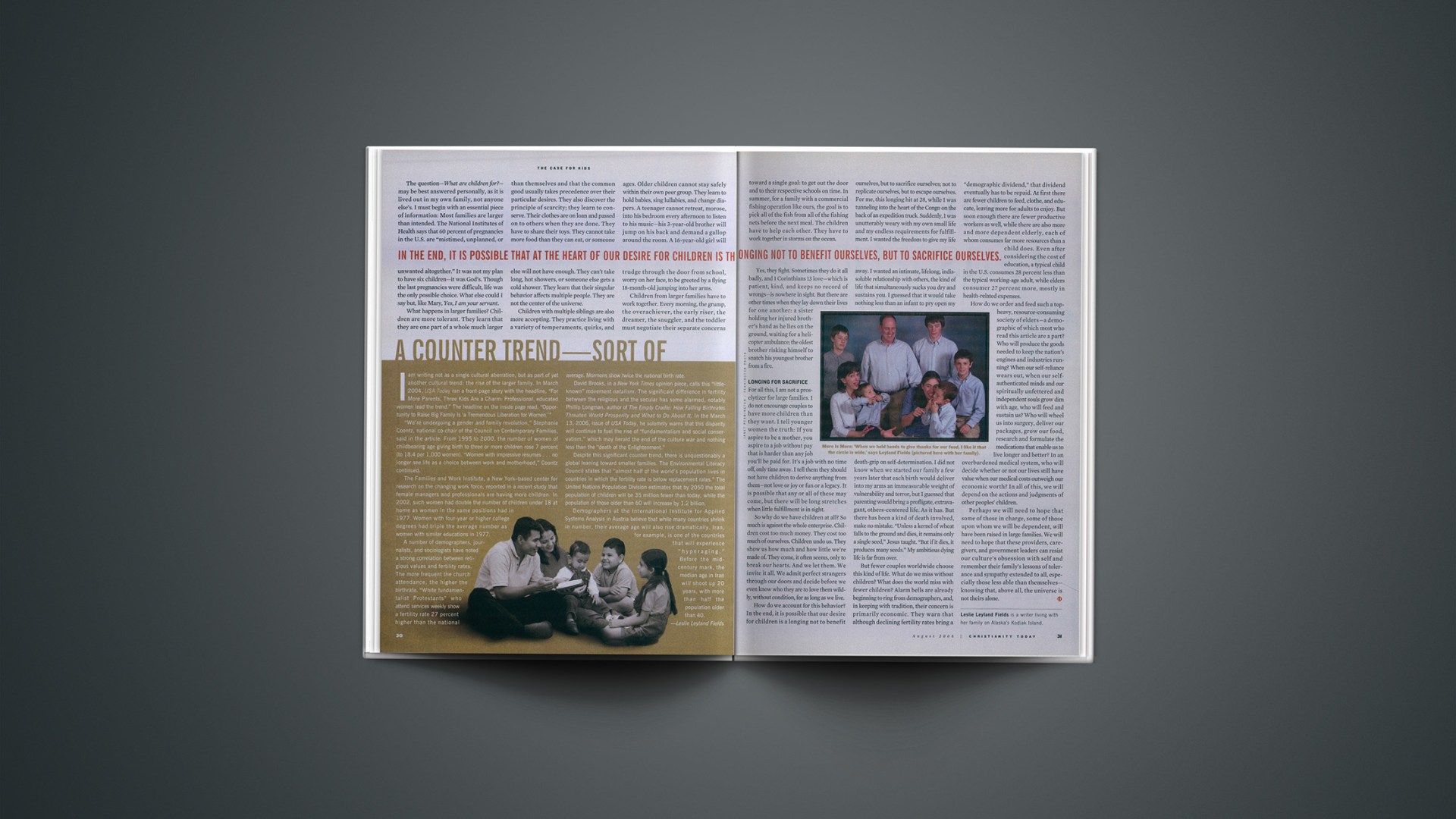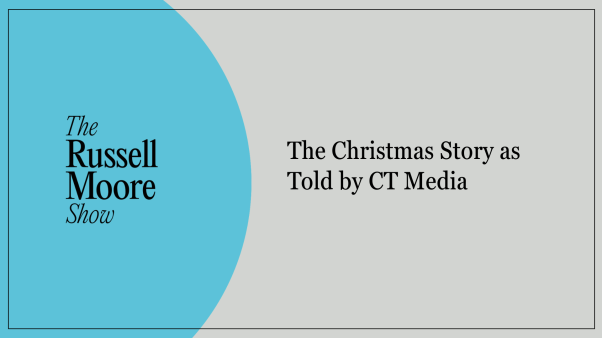I am writing not as a single cultural aberration, but as part of yet another cultural trend: the rise of the larger family. In March 2004, USA Today ran a front-page story with the headline, “For More Parents, Three Kids Are a Charm: Professional, educated women lead the trend.” The headline on the inside page read, “Opportunity to Raise Big Family Is ‘a Tremendous Liberation for Women.'”
“We’re undergoing a gender and family revolution,” Stephanie Coontz, national co-chair of the Council on Contemporary Families, said in the article. From 1995 to 2000, the number of women of childbearing age giving birth to three or more children rose 7 percent (to 18.4 per 1,000 women). “Women with impressive resumes … no longer see life as a choice between work and motherhood,” Coontz continued.
The Families and Work Institute, a New York–based center for research on the changing work force, reported in a recent study that female managers and professionals are having more children. In 2002, such women had double the number of children under 18 at home as women in the same positions had in 1977. Women with four-year or higher college degrees had triple the average number as women with similar educations in 1977.
A number of demographers, journalists, and sociologists have noted a strong correlation between religious values and fertility rates. The more frequent the church attendance, the higher the birthrate. “White fundamentalist Protestants” who attend services weekly show a fertility rate 27 percent higher than the national average. Mormons show twice the national birth rate.
David Brooks, in a New York Times opinion piece, calls this “little- known” movement natalism. The significant difference in fertility between the religious and the secular has some alarmed, notably Phillip Longman, author of The Empty Cradle: How Falling Birthrates Threaten World Prosperity and What to Do About It. In the March 13, 2006, issue of USA Today, he solemnly warns that this disparity will continue to fuel the rise of “fundamentalism and social conservatism,” which may herald the end of the culture war and nothing less than the “death of the Enlightenment.”
Despite this significant counter trend, there is unquestionably a global leaning toward smaller families. The Environmental Literacy Council states that “almost half of the world’s population lives in countries in which the fertility rate is below replacement rates.” The United Nations Population Division estimates that by 2050 the total population of children will be 35 million fewer than today, while the population of those older than 60 will increase by 1.2 billion.
Demographers at the International Institute for Applied Systems Analysis in Austria believe that while many countries shrink in number, their average age will also rise dramatically. Iran, for example, is one of the countries that will experience “hyperaging.” Before the mid-century mark, the median age in Iran will shoot up 20 years, with more than half the population older than 40.
Copyright © 2006 Christianity Today. Click for reprint information.
Related Elsewhere:
Also posted today is
The Case for Kids | A defense of the large family by a ‘six-time breeder.’
Inside CT
Love to Love Children | Our growing families.
Children Matter: Celebrating Their Place in the Church, Family, and Community is available from Christianbook.com and other retailers. Co-author Scottie May reviewed a set of books on the faith of children.
An excerpt fom Amy Laura Hall’s Conceiving Parenthood is available from Books & Culture.
A summary of Why Do Americans Want Children?” is available from Science Daily.
More Christianity Today coverage of large families includes:
Editorial
Fill an Empty Cradle | Falling birthrates demand new priorities for families. (Nov. 1, 2004)
Make Love and Babies | The contraceptive mentality says children are something to be avoided. We’re not buying it. (Nov. 9, 2001)
‘Be Fruitful and Multiply’ | Is this a command, or a blessing? (Nov. 9, 2001)










